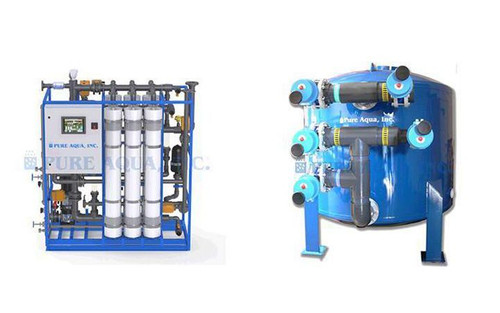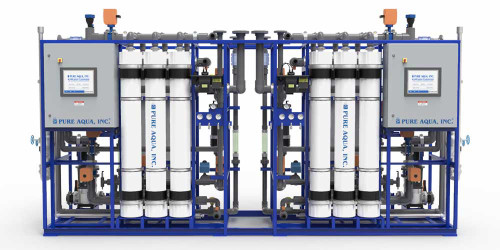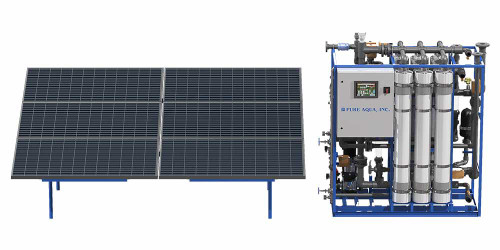Presence of turbidity, color, iron and silica in feed water are factors that should be treated to make the water useable for human consumption.
How Does Ultrafiltration Work?
Ultrafiltration is a form of filtration that uses membranes to separate different fluids or ions. Ultrafiltration is not as fine a filtration process as Nanofiltration, but it also does not require the same energy to perform the separation. Ultrafiltration uses membranes that are partially permeable to perform the separation, but the membrane pores are typically much larger than Nanofiltration membrane pores.
Ultrafiltration is more commonly used to separate a solution that has a mixture of some desirable components and some that are not desirable. One of the uses that demonstrate the usefulness of ultrafiltration is electrodeposition paint recovery. In this instance, the paint, which is composed of a resin, a pigment and water are separated into two streams that can be reused. The first stream includes the water and a small amount of the paint resin, which can be used to rinse the parts later in the process. The paint pigment is separated from that stream, allowing the water to be re-used in the paint bath, allowing the bath to be concentrated to a useable level.
Ultrafiltration is capable of concentrating bacteria, some proteins, some dyes, and constituents that have a larger molecular weight of greater than 10,000 daltons. Ultrafiltration is only somewhat dependent on the charge of the particle, and is much more concerned with the size of the particle.
[custom-specifications]
The use of the above methods of treatment involve the following drawbacks:
- Large space for storage of the various tanks
- Chemicals used in the treatment, which can tremendously increase the operational cost of the plant in a year
- Large amount of solid waste in the form of sludge and water waste from backwashing process.
- Proper disposal of the waste.
[/custom-specifications]
[custom-features]
In general, conventional filtration will require any or all of the following equipment to effectively reduce or remove the above-mentioned components:
- Coagulation
- Flocculation
- Sedimentation
- Sand filtration
- Disinfection
[/custom-features]
[custom-usage]
Ultrafiltration membranes offer a technologically advanced advantage to water treatment that is cost effective, compact in design, requires low maintenance, produces small amounts of waste and has low operating costs.
[/custom-usage]
-
Thanks for the read
good content
- Related Project1:
- https://pureaqua.com/ultrafiltration-and-nanofiltration-skids-20-50-gpm-usa/
- Related Project2:
- https://pureaqua.com/duplex-filtration-system-for-mercury-reduction-150-gpm-usa/
- Related Project3:
- https://pureaqua.com/industrial-ultrafiltration-system-120000-gpd-usa/
- Related Project4:
- https://pureaqua.com/duplex-media-filtration-system-600-gpm-usa/
 ENGLISH
ENGLISH ESPAÑOL
ESPAÑOL العربية
العربية PORTUGUÉS
PORTUGUÉS FRANÇAIS
FRANÇAIS













